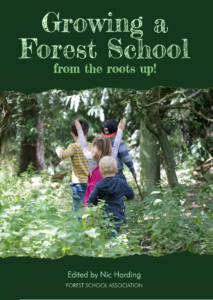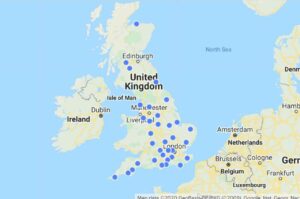FSA Blog post by Stefania Donzelli October 28th 2021.
Autistic Play…normal play characteristics seen otherwise’. This blog post from neurodivergent Forest School practitioner and trainer in Italy, Stefania Donzelli, provides a great insight into how we can understand better the play characteristics of autistic play. Stefania gives an excellent view of monotropism – the autistic-led theory that provides an internal and comprehensive “explanation for all the main features of autistic psychology”. This helps all practitioners further understand autistic play. Forward by Jon Cree.
Autistic play at forest school: pretend play seen otherwise
Play is a fundamental part of childhood and it supports children in their physical, cognitive, social and emotional development. Of course, both human development and play are extremely diverse and, depending on socio-cultural norms, some forms of playing are seen as more beneficial or competent than others. When differences in play do not align to socially constructed understanding of normalcy, as it happens to autistic children, they are generally pathologised and considered faults of the individual to be fixed (Waltz, 2020). It follows that autistic children should be thought to play like typical children, through adult-led experiences, in order to improve later development outcomes. As a result, the space and time available to autistic children to experiment spontaneous play, and feel content and capable about it, are significantly reduced, making play a main site for the production of disabling experiences (Conn, 2015; Conn and Drew 2017; Willans 2020).
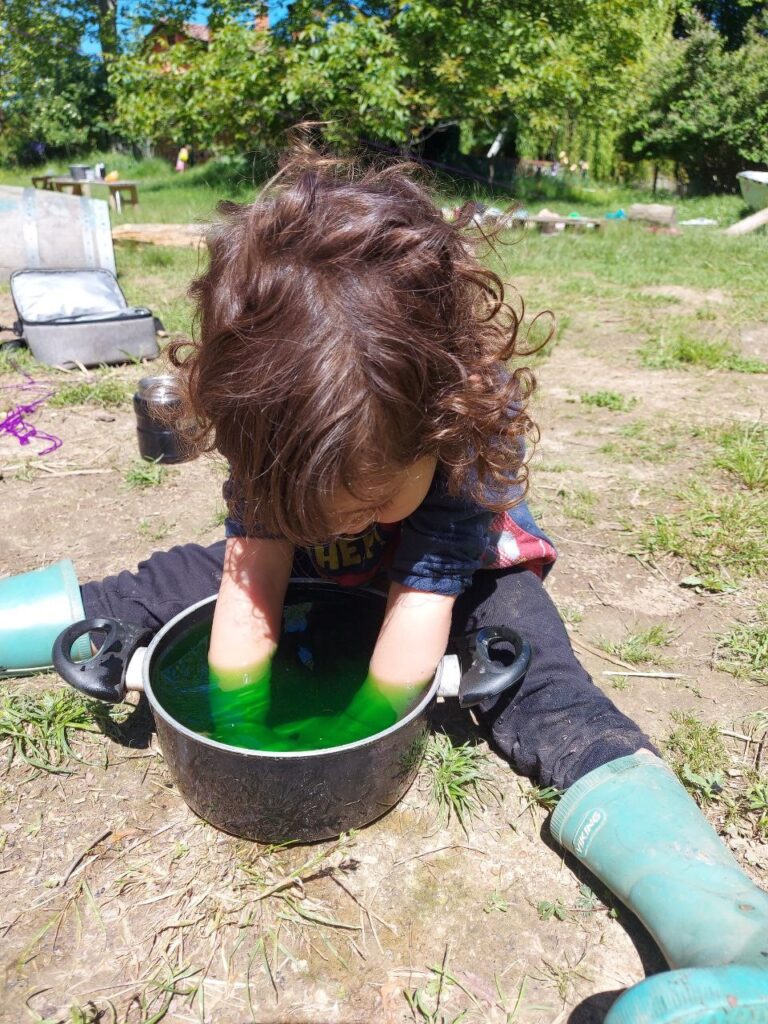
Given that learning through spontaneous play stands at the core of the forest school approach, how can we make sure that the experience of play is an enabling one for autistic children? The neurodiversity paradigm, which conceives neurological differences as natural and valid and suggests that they should be respected and supported, offers a point of departure to answer this question (Walker, 2014). Within this framework, one key step is to acknowledge the existence of patterns in the ways autistic children experience play and think about their play behaviours not as something puzzling or problematic, but rather as characteristics of autistic play culture: expression of their neurological functioning and of their experience of living in a society that sees autism through a deficit-based lens. Practically, this implies focusing on “what children do and what it means to them”, instead of paying attention only to the external features of play and how they appear deficient in relation to normative developmental frameworks (Conn, 2015: 1193; Conn and Drew 2017; Person, 2020; Willans, 2020).
Another important step in order to support autistic play at forest school is to comprehend how it relates to autistic cognition and learning. The autistic-led theory of monotropism provides an internal and comprehensive “explanation for all the main features of autistic psychology” (Murray, 2018). It describes autistic cognition in terms of “atypical patterns of attention” that bring the autistic person to intensively and joyfully focus on one or few interests at a time (Murray et al., 2015: 139). It also points out that the autistic mind, employing most of its processing resources within its attention tunnel, faces challenges when dealing with things outside of this tunnel – with implications for self-regulation, communication, executive functions, and social interactions (Murray, 2018). As we will see, monotropism can be very effective in enabling forest school practitioners to comprehend the rationales behind autistic play behaviours so as to appreciate and validate autistic play culture, and to discriminate whether and how autistic children need support.
Pretend play is a perfect example to reason on autistic play culture because its late appearance and repetitive nature in autistic kids has long been problematised. Firstly, it should be acknowledged that pretend play is a broad category including symbolic, socio-dramatic, role, fantasy and imaginative play. One of its central features is the production of representations that go beyond what the senses perceive in the moment. This makes pretend play as a training ground to perform abstract mental operations that are not linked to the immediate context and to counterfactually investigate the potential consequences of “pretended” premises (Gopnik, 2016). As we will see, by shedding lights on the motivations sustaining autistic pretend play, monotropism is able to reveal how abilities, such as abstract and counterfactual thinking, are developed by autistic children in a way that diverge from the typically developing child, but that is not deficient.
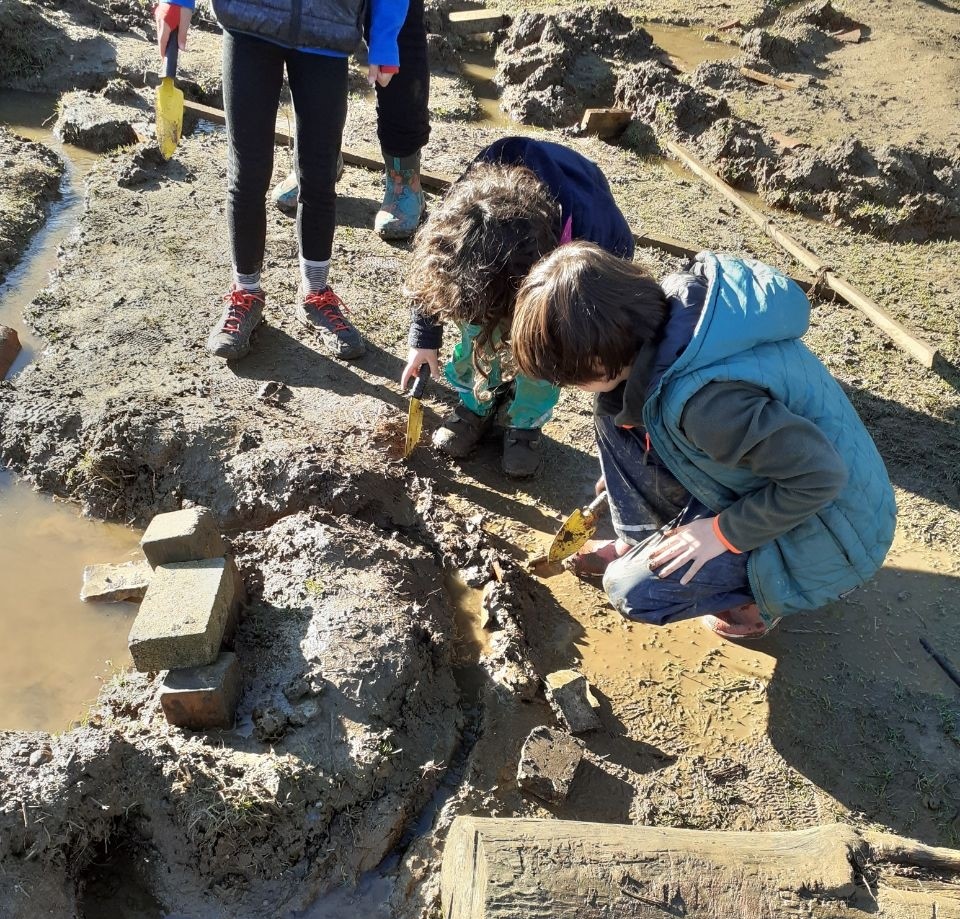
Usually, autistic kids engage later in pretend play. This happens because the monotropic mind prefers to prioritise the acquisition of one skill at a time (Murray et al., 2015). According to accounts produced by autistic writers on their play, this often implies exploring in-depth the physical world before engaging in its symbolic representations (Nanny Aut, 2021). Indeed, among the most common playful activities of autistic children in the early years, there are experimentations with the body and engagement with the sensory characteristics of objects, beings, and spaces, which are said to provide “heightened awareness” of one’s self and the environment (Conn 2015: 1197). Other examples are exploratory and mastery play, which provide the opportunity to learn about the environment and test one’s scope of possibility for controlling or transforming it (Grandin and Barron, 2005). Yet, not all autistic children follow this chain of interests: for example, even if it is not always clear from the outside, some intensively focus on symbolic play to investigate the mechanisms of representation.
Autistic pretend play however is not only described as late-coming, but also as atypical. When autistic children develop an interest in manipulating symbolic representations, they do so by paying great attention to details. This occurs because the monotropic mind becomes hyper-aware within its attention tunnel (Murray et al. 2015). As a consequence, autistic children are more selective and discriminating in the process of separation and generalization that is implied in the abstract dimension of symbolic play. A detail that appears insignificant to a neurotypical kid could be judged fundamental by an autistic kid. For example, an autistic child, motivated to find materials to represent long hairs, may take into account more criteria to select the object to substitute the hairs: length, thickness, consistency, temperature, colour, etcetera. Moreover, the chosen material might be the right one for one specific situation, but it might change in a different situation. It follows that autistic symbolic play does support the development of abstract thinking, but it does so atypically since it takes into account much more criteria to construct a coherent representation and its validity is less generalizable.
Another feature of autistic pretend play, which especially appears in socio-dramatic and role play, is the autistic preference for the enactment of “orderly and predictable representations of real life” (Conn, 2015: 1198). For example, autistic kids may spend an extended period of time staging daily routines, they can find pleasure in repeating over and over specific scenes or they can dedicate a long time to collecting, sorting, and arranging objects to set up elaborate play settings. These various and often overlapping tendencies can be well explained by monotropism.
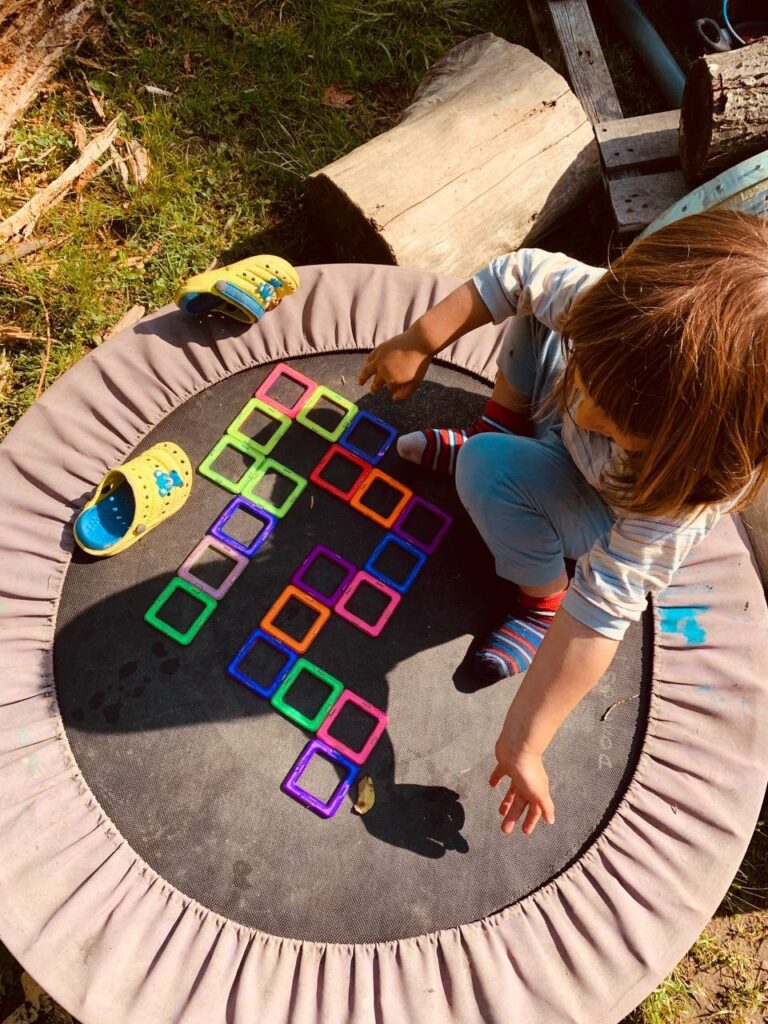
The preference for long and repetitive acts of pretence is connected to the need of exploring in-depth specific topics of interest, while the focus on daily routines and classifications is linked to the need of investigating predictability in everyday life and to the desire to construct a better and more organised world than the real one (Murray, 2018; Conn, 2015). Indeed, the autistic inclination to process one sensory channel at a time and the effort and stress deriving from distributing attention “between multiple streams” makes the search of regularity as particularly pleasurable (Murray, 2018).
One more characteristic of autistic pretence, which especially emerges in fantasy and imaginative play, is the use of “vividly remembered details of external sources” as a means to enhance the play of both the autistic child and the other playmates (Conn, 2015: 1199). These sources are usually well-known reading, visual or audio materials –connected to the interests attracting the autistic attention– that are mixed and used to elaborate settings,
scenes, and narrative plots. As knowledge about both real and fantasy worlds are a key ingredient to develop counterfactual reasoning, the use of external sources certainly support the acquisition of this skill (Benossi, 2017). Yet, changes in the external sources proposed by other playmates may be challenging to the monotropic mind as it experiences distress when rapidly processing multiple information. In this situation, autistic children may adopt different strategies: taking a more directive role, giving it to someone else, or slowing down the pace of the play to explicitly clarify confused passages and negotiate alternative solutions (Nanny Aut, 2021). Being aware of how autistic attention patterns influence participation in social pretend play is very useful to forest school practitioners to decide whether and how to support all children’s interactions.
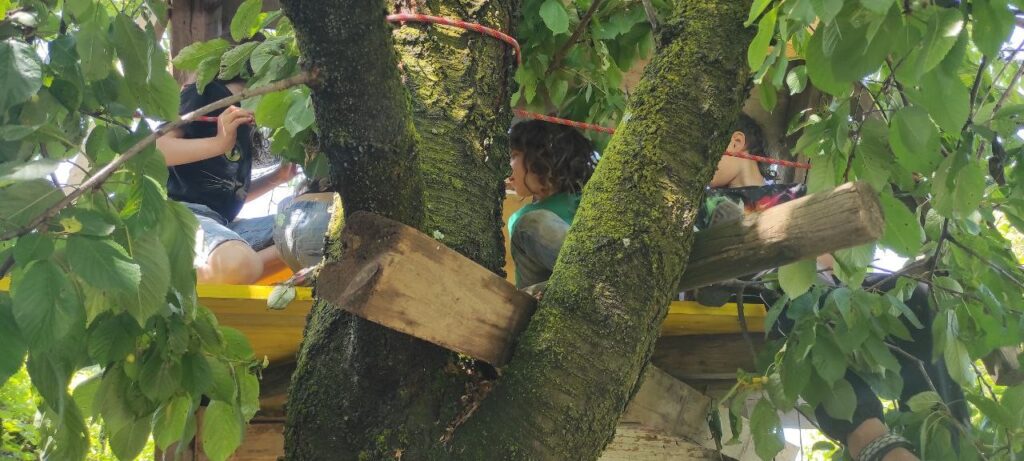
Of course, much more could be said about autistic pretend play and its benefits and other autistic-led theories –such as the double empathy problem (Milton, 2012) and the theory of the autistic mind (Williams, 2021)– can help to better understand autistic play culture. Another topic that deserves far more attention is how the forest school learning environment can enhance or obstruct autistic play culture. As a first step, this article has attempted to show that autistic development reaches certain skill-based goals according to a different time-line and through a different route. Recognising autistic development as valid, and appreciating and accommodating autistic play differences at forest school, will not make autistic children more typical. Instead, it has the potential to avoid their disablement, support their growth into competent and confident autistic adults, and promote reciprocal understanding between autistic and neurotypical children.
Stefania Donzelli is neurodivergent forest operator and forest pedagogy trainer in Italy where she is a member of the working group Pedagogia del bosco | Ricerca e Formazione. She holds a PhD in the Social Sciences.
Acknowledgements
I would like to thank the discord group Autism and Forest School and, especially, Fergus Murray, for sharing many useful resources on autistic play; Chiara Castellini, for thinking with me about the key traits of autistic play; and Selima Negro, for her insightful feedbacks on this article.
References
Benossi, L. (2017). Pretending to work: a closed world reasoning formalisation of pretend play. MSc Thesis. Universitat van Amsterdam.
Conn, C. (2015). ‘Sensory highs’,‘vivid rememberings’ and ‘interactive stimming’: children’s play cultures and experiences of friendship in autistic autobiographies. Disability & Society, 30(8), 1192-1206.
Conn, C., & Drew, S. (2017). Sibling narratives of autistic play culture. Disability & Society, 32(6), 853-867.
Gopnik, A. (2016). The gardener and the carpenter: What the new science of child development tells us about the relationship between parents and children. Macmillan.
Grandin, T., & Barron, S. (2005). The unwritten rules of social relationships. Future Horizons.
Murray, D., Lesser, M., & Lawson, W. (2005). Attention, monotropism and the diagnostic criteria for autism. Autism, 9(2), 139-156.
Murray, F. (2018). Me and Monotropism: A unified theory of autism. The Psychologist, 32: 44-49.
Milton, D. E. (2012). On the ontological status of autism: the ‘double empathy problem’. Disability & Society, 27(6), 883-887.
Nanny Aut (2021). Learning to play. No. Playing to learn. Autistic village. Online: https://autistic-village.com/2021/08/12/learning-to-play-no-playing-to-learn/?like_comment=50
Person, R. (2020). Play, stimming, and sensory processing. Virtual Summit: Sensory processing in autism. Star Institute. Online: https://www.youtube.com/watch?v=938O69Kwv7M
Walker, N. (2014). Neurodiversity: some basic terms and definitions. Neuroqueer. Online: https://neuroqueer.com/neurodiversity-terms-and-definitions/
Waltz, M. (2020). The production of the ‘normal’child: Neurodiversity and the commodification of parenting. In Neurodiversity Studies (pp. 15-26). Routledge.
Willans, B. (2020). Using playwork perspectives and ethnographic research to move towards an understanding of autistic play culture. In Further Perspectives on Researching Play from a Playwork Perspective (pp. 20-36). Routledge.

